Coyotes are medium-sized, North American canines closely related to wolves. They come in a wide variety of shapes and sizes, and there are 19 different subspecies recognized by science. Much like the wolf, these creatures come with a fair amount of dislike and folklore. Unlike wolves, their image has not improved, and they are still viewed negatively by many people. Read on to learn about the coyote.
Description of the Coyote
These canines are smaller than wolves, usually ranging between 15 – 44 lbs. as adults. In general, subspecies in northern regions grow larger than those in areas farther south.
For the most part, their fur is light grey and red, with black and white hairs dispersed across the coat. Young pups are much darker, and usually more uniform in color, than adults. Coyote tracks are longer and less rounded than dogs, and much smaller than wolves.
Interesting Facts About the Coyote
Despite their bad rep, the species as a whole is not threatened by human activity at this time. Unfortunately, they are still vilified and hated by many. Learn why these creatures are interesting and useful below!
- Hop to It – When pups are first learning how to hunt, grasshoppers and other insects are very important in the learning process. By stalking and pouncing on elusive grasshoppers the pups are able to hone their technique.
- Carry On, Without Carrion – Just like vultures, coyotes help to dispatch the carcasses of animals that have died. Carrion, or dead creatures, can harbor and spread disease when left to rot. Scavengers are important in the prevention of disease outbreak, and coyotes are no exception.
- Pest Control – Though humans view these canines as pests, they are actually quite effective at dispatching pests in urban areas. Some of their favorite foods in urban areas are rats and mice. They are also known to eat snakes, insects, squirrels, and other small mammals.
- Loyal Partner – Scientists believe that when these creatures live in urban areas they are much more likely to mate for life. Individuals in rural areas will stay with the same mate for several years, but those in urban areas have been known to remain with their partner until one of them dies.
Habitat of the Coyote
Before humans decimated the populations of wolves and cougars, coyotes were restricted to much smaller habitat ranges. The larger predators out competed and even killed their smaller counterparts, keeping these canines in areas less inhabited by wolves and other large predators.
They were commonly found in grasslands, sagebrush habitats, and deserts. Now that wolves have been removed from most habitats, these canines have spread to the majority of North American habitats in their range, as well as urban areas.
Distribution of the Coyote
These canines can be found throughout Alaska, Canada, North America, and Central America. They have an extremely wide range, and have thrived since the removal of wolves from most areas. Within their range, 19 different subspecies have been identified based on geographical region.
Diet of the Coyote
Coyotes are primarily carnivores, but will feed on fruits, berries, and seeds, if the opportunity arises. They are generalists, which means that they can and will consume many different types of prey. Some commonly observed kills include rabbits, bison, rodents, deer, sheep, frogs, snakes, insects, lizards, fish, and crustaceans.
They have also been known to eat harp seals, bear cubs, and rattlesnakes. Some fruits and grains that they will feed on includes peaches, blackberries, apples, blueberries, watermelon, carrots, peanuts, wheat, corn, and beans.
Coyote and Human Interaction
Humans and coyotes have conflicting interactions quite frequently. These canines are considered pests, particularly because of their predation on livestock. In areas where they are fed, or in urban areas where they become habituated to humans, bites have increased in volume. Farmers will also hunt them for killing livestock, and over half of the livestock deaths due to predators are attributed to coyotes.
Domestication
Before Europeans settled in North America, there may have been some level of domestication of coyotes. Native villages, particularly in the Great Plains, had been known to keep coyotes. Today, these creatures are not domesticated.
Does the Coyote Make a Good Pet
No, coyotes do not make good pets. Though they look cute and cuddly, when they are habituated to humans or fed they can begin to bite and will have to be euthanized. They are wild animals, and should be treated as such.
Coyote Care
In a zoological setting, these canines require care that is similar to domestic dogs and wolves. They should have plenty of space to roam, and lots of opportunity to socialize.
As intelligent mammals, they require lots of opportunities for environmental enrichment, like puzzle feeders, toys, and positive reinforcement training. They can be fed a primarily carnivorous diet, with supplemental fruits and vegetables.
Behavior of the Coyote
Though they are closely related to wolves, these canines have much less stringent social structure and reliance. This species targets smaller prey, which requires less teamwork and cooperation than larger prey.
Unlike wolves, these canines will loosely form groups of non-family members for socialization purposes. These groups are not long lasting, but occur to cooperate capturing prey or simply for interaction. In wolves, pack members are only offspring of the alpha pair that remain until they are ready to breed and form their own packs.
Reproduction of the Coyote
It can take months for a pair to bond and socialize before mating occurs. Coyotes are monogamous, and will mate for life, but will choose another mate if their partner dies. The pair will establish a territory and dig a den for the pups to be born in. Holes of large mammals, like badgers and skunks, are frequently excavated for this purpose.
Pups are born 63 days after mating, and the average litter consists of 6 pups. The pups will begin testing out meat when they are 4 – 6 weeks old, and will be fully weaned in another 2 months. The pups will remain with the family for varying amounts of time.
Beliefs, Superstitions, and Phobias About the Coyote
In Native American folklore, coyotes are often referred to as tricksters. In these tales he can shape shift between human and canine form, and uses this ability to rebel against social convention in a humorous fashion. This “Wile E.” image is believed to have come about because of the animal’s adaptability and intelligence.

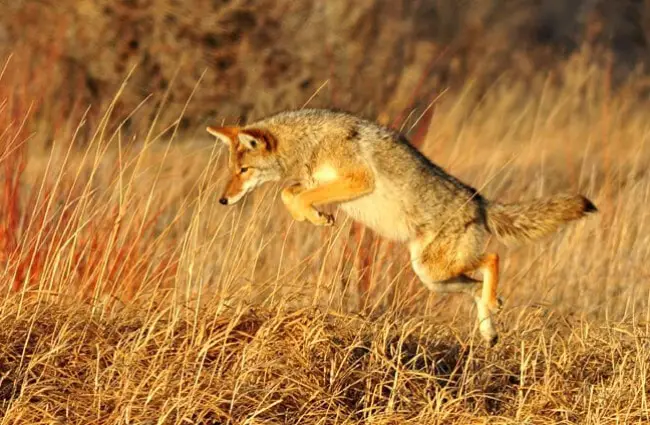

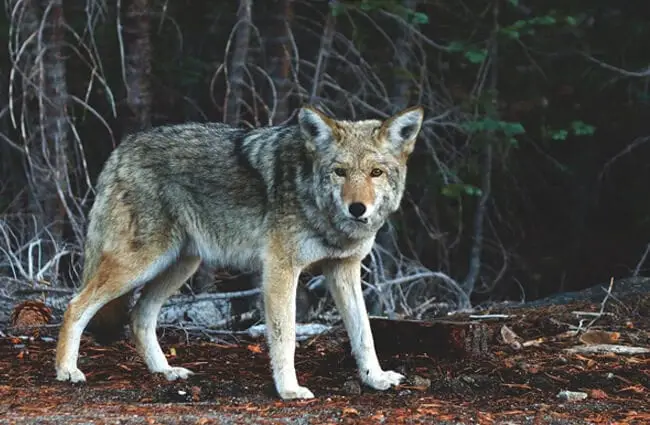
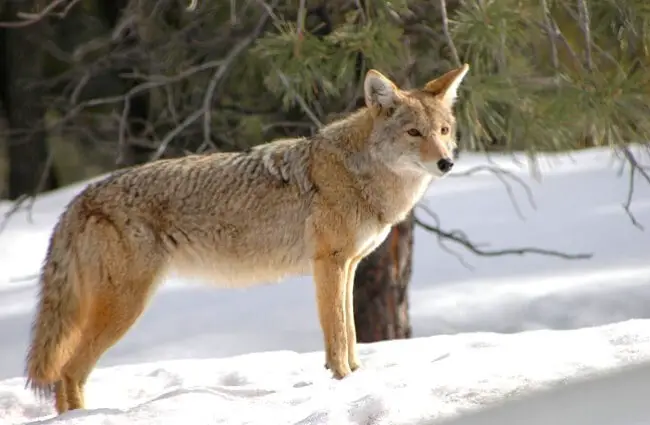


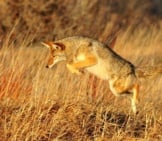
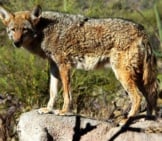
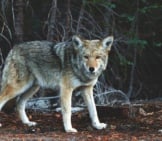

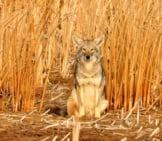

![Red Angus Closeup of a beautiful Red Angus cowPhoto by: U.S. Department of Agriculture [pubic domain]https://creativecommons.org/licenses/by/2.0/](https://animals.net/wp-content/uploads/2020/03/Red-Angus-4-238x178.jpg)












![Red Angus Closeup of a beautiful Red Angus cowPhoto by: U.S. Department of Agriculture [pubic domain]https://creativecommons.org/licenses/by/2.0/](https://animals.net/wp-content/uploads/2020/03/Red-Angus-4-100x75.jpg)

